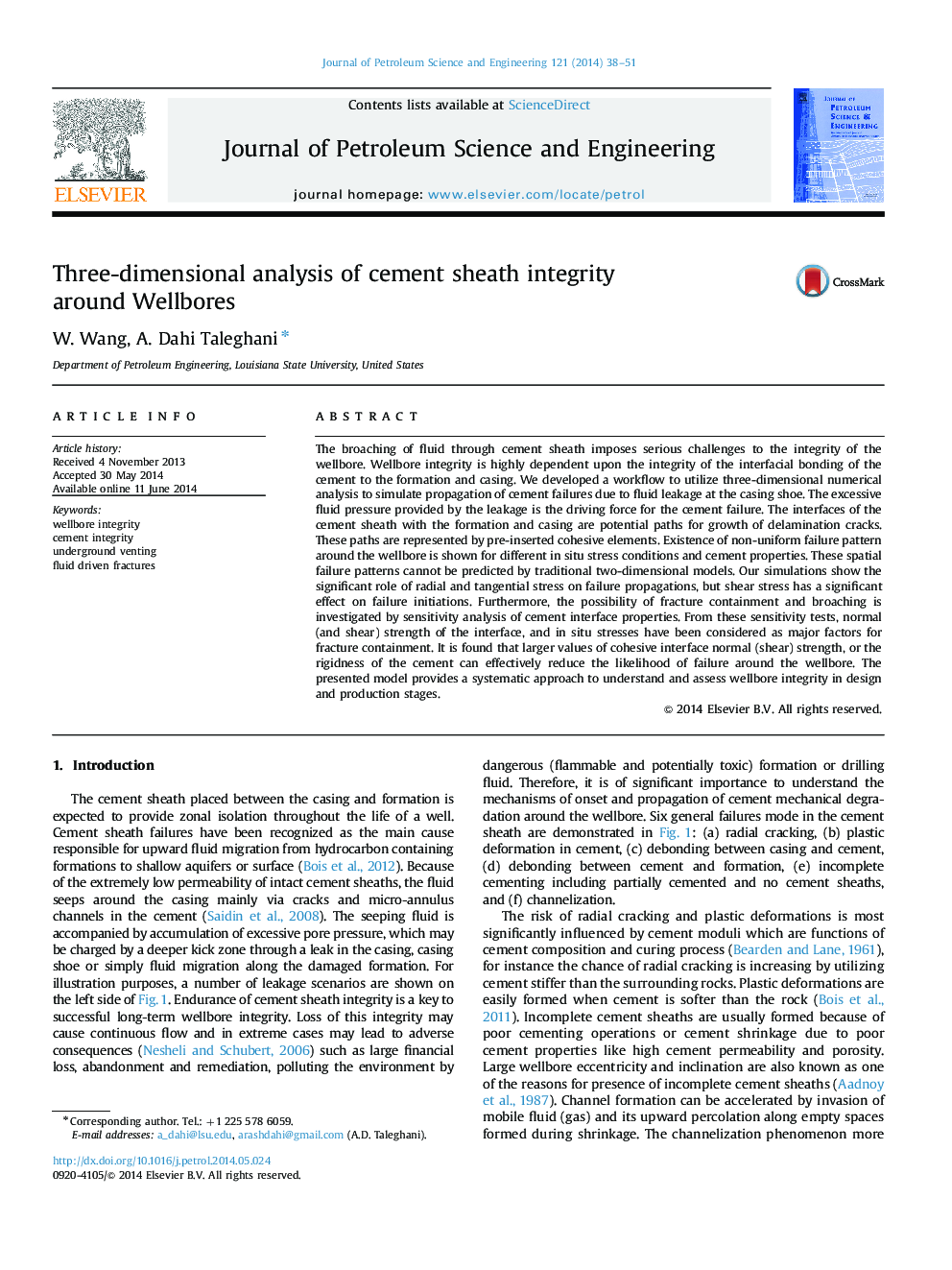| Article ID | Journal | Published Year | Pages | File Type |
|---|---|---|---|---|
| 1755055 | Journal of Petroleum Science and Engineering | 2014 | 14 Pages |
Abstract
The broaching of fluid through cement sheath imposes serious challenges to the integrity of the wellbore. Wellbore integrity is highly dependent upon the integrity of the interfacial bonding of the cement to the formation and casing. We developed a workflow to utilize three-dimensional numerical analysis to simulate propagation of cement failures due to fluid leakage at the casing shoe. The excessive fluid pressure provided by the leakage is the driving force for the cement failure. The interfaces of the cement sheath with the formation and casing are potential paths for growth of delamination cracks. These paths are represented by pre-inserted cohesive elements. Existence of non-uniform failure pattern around the wellbore is shown for different in situ stress conditions and cement properties. These spatial failure patterns cannot be predicted by traditional two-dimensional models. Our simulations show the significant role of radial and tangential stress on failure propagations, but shear stress has a significant effect on failure initiations. Furthermore, the possibility of fracture containment and broaching is investigated by sensitivity analysis of cement interface properties. From these sensitivity tests, normal (and shear) strength of the interface, and in situ stresses have been considered as major factors for fracture containment. It is found that larger values of cohesive interface normal (shear) strength, or the rigidness of the cement can effectively reduce the likelihood of failure around the wellbore. The presented model provides a systematic approach to understand and assess wellbore integrity in design and production stages.
Keywords
Related Topics
Physical Sciences and Engineering
Earth and Planetary Sciences
Economic Geology
Authors
W. Wang, A. Dahi Taleghani,
